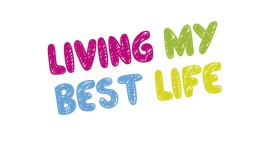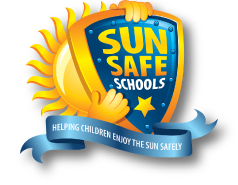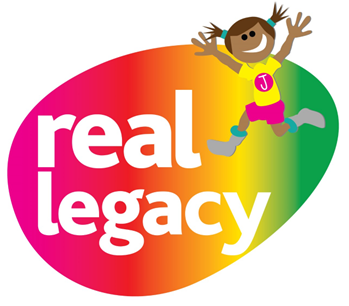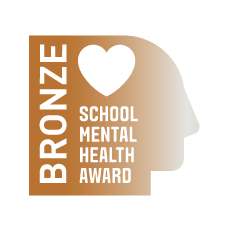Behaviour and safety of pupils is good. We foster positive attitudes and a sense of high esteem in the children. We teach the children to be aware of other people’s needs. The children are very well behaved as a rule (as noted by Ofsted 2010), but there may be times when a child’s behaviour needs to be challenged, this may include a verbal reprimand or some privilege being withdrawn e.g. missing a favourite activity. We may have to consult with parents from time to time about a child’s behaviour and we appreciate your help and co-operation in these matters.
Pupils like coming to school, and say they feel safe – Ofsted 2012.
Cavendish Close Infant and Nursery School Behaviour Policy
This policy is the statement of principles, aims and strategies for the positive management of behaviour at Cavendish Close Infant and Nursery School.
Principles
We believe good behaviour is an essential condition for effective teaching and learning to take place.
At Cavendish Close Infant and Nursery School we believe that pupils and staff have the right to learn and teach in an environment that is safe, friendly, peaceful and fair.
Good behaviour must be carefully developed and supported. High self esteem promotes good behaviour, effective learning and positive relationships. The best results, in terms of promoting good behaviour arise from emphasising potential, rewarding success and giving praise for effort and achievement, rather than focussing on shortcomings and failure. Through the example of the adults who care for them at school, through well planned and stimulating learning opportunities, we believe that children will accept learning challenges and develop self discipline.
It is the responsibility of parents to share with the school in helping their children to behave well.
We believe good behaviour means that everyone in school is:
- Careful and kind.
- Polite and friendly.
- Helpful to each other.
- Quiet and hardworking.
- Respectful and tolerant.
Aims for good behaviour:
- Our aims are to work consistently and fairly on the positive management of behaviour.
- To help our children develop into caring and thoughtful people who respect and value the feelings, opinions, beliefs, property and differences of others.
- To encourage staff, children and parents to value good behaviour.
- To develop our children’s self discipline.
- To help our children to feel good about themselves and others.
- To encourage our children to co-operate with one another and with adults in the school.
- To create a positive and stimulating learning environment, having high expectations of children’s work.
- To work alongside parents to encourage our children to develop socially, personally, academically and morally in preparation for a positive role in society.
Our Objectives
We support positive behaviour and a positive environment through:
- A consistent approach by the whole school community.
- Constructive whole school planning for PSHE.
- Appreciating and following agreed codes of behaviour.
- Encouraging our children to see themselves as a member of the school team and recognise their responsibility within this.
- Developing the skills of co-operation and discussion.
- Encouraging everyone to take care of and have respect for their own and each others belongings.
- Encouraging everyone to take pride in our environment.
- Having a positive and consistent approach to playtimes and lunchtimes.
- Creating a stimulating classroom environment.
- Providing clear and positive learning experiences fairly and consistently.
- Offering a broad and balance curriculum that is well prepared, planned and stimulating to each child.
- Ensuring that curriculum issues concerning organisation, methods of teaching and learning, content, and differentiation are addressed.
As adults we have a vital part to play as role models
We do this through:
- Demonstrating good manners.
- Practising good behaviour to each other as well as to the children.
- Teaching appropriate behaviour and giving feedback when pupils are behaving well.
- Showing respect for every child as an individual.
- Making every child feel valued.
- Not accepting bullying, anti-social behaviour in school, on any level, at any time.
- Being aware of vulnerable children.
- Being seen to be fair and consistent.
- Responding quietly, calmly, consistently and positively.
- Criticising the behaviour not the child.
- Avoid labelling.
- Listening with empathy and tact.
- Handling confidential information with sensitivity.
We have school wide general expectations that all children will:
- Do their best in all areas of school life.
- Think before they act.
- Take responsibility for their own actions.
- Treat others as they would like to be treated themselves.
- Consider the feelings of others.
We expect all children to conform to the GOLDEN RULES:
- Walk around the building calmly.
- Use good manners.
- Always be polite.
- Keep hands and feet to ourselves.
- Listen and speak to all adults in school.
- Take care of our school and equipment.
Procedures
We encourage good patterns of behaviour by using:
- Non-verbal signals.
- Positive verbal comments and praise.
- Positive comments written in books.
- Giving children responsibility.
- Sharing positive aspects with others.
- Awarding certificates and stickers.
- Informing parents.
- Recognition at celebration assembly.
- Class privileges.
- Use of I CAN DO IT tree.
- Use of traffic lights.*
- Visit to Head Teacher/Deputy Head Teacher.
When a child forgets a classroom or whole school rule or breaks it on purpose, sanctions will be used fairly and consistently.
It is important to continue to reward and encourage the child for their good behaviour. The child will be given the choice after each sanction to conform. This encourages the child to take responsibility for his/her own behaviour.
The range of sanctions include:
- Planned ignoring.
- Non verbal signals.
- Verbal warning, reminding the child of our expectations/rules.
- Private discussion about why the behaviour is unacceptable, and giving the consequences of further poor behaviour.
- Change of position within the learning environment.
- Separating a child from a group or the class.
- Loss of privileges.
- Move name onto amber/red traffic light. *
- Time out procedures.
- Contacting parents to discuss ways of helping the child to improve his/her behaviour.
- Referring the child to the Deputy Head Teacher.
- Referring the child to the Head Teacher. (Severe mis-behaviour)
- Referring the child to the SENCO (Special Educational Needs Co-ordinator) with a view to devising an ‘individual behaviour programme’, to help the child learn appropriate social behaviour in school.
*There are traffic lights in the classrooms. All children are on the green light unless they misbehave in some way. A child can move onto the amber light and onto the red light for some behaviour, or straight to the red in more severe cases. This serves as a visual reminder for the child.
It is possible for the sanctions to start at any level depending on the nature of the unacceptable behaviour.
Special consideration of sanctions may be required when dealing with children with Special Educational Needs who display behavioural difficulties.
All dinnertime supervisors need to be informed of children with particular behavioural needs, their individual programmes, strategies and appropriate sanctions.
When the procedures don’t work
In cases of repeated misbehaviour or if the procedures appear to be failing to help a child control his or her behaviour, a meeting may be called. This involves the Class Teacher, Head Teacher, and parents. It may also involve others such as SENCO, EWO (Education Welfare Officer), or Educational Psychologist, and behaviour intervention services.
The aim of this meeting would be to devise a plan of action to help the child improve his/her behaviour. Behaviour targets will be set and a review date given.
Exclusion
In rare cases it may be necessary to exclude a child for example if there has been a physical attack on another person. This is only ever considered after all other avenues have been explored.
At all times, the LA’s protocol is followed. Any child returning to school following an exclusion, is helped to behave appropriately.
Physical Restraint
When a pupil’s behaviour presents a serious danger of causing significant harm to themselves, to others or property or there is a major threat to good order, approved staff may need to take physical control until such time as the pupil is able to take back control for themselves. Any restraint should be in line with LA guidelines.










